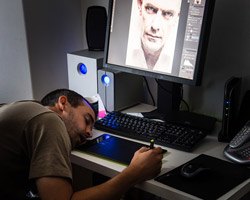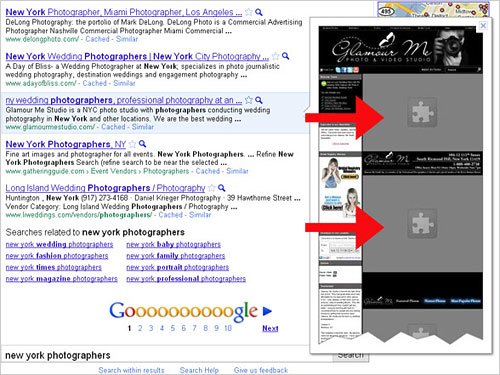"All the world's a stage, and all the men and women merely players,", said Shakespeare in As You Like It. How appropriate a description for this month's photograph — theatrical to the nth degree! This thought, by the way, is not meant to be denigrating; there is nothing wrong in creating a theatrical photograph.
NYIP Graduate Steen Talmark of Bjerringbro, Denmark, is the photographer, and I am moved by his dramatic interpretation of an ordinary laborer. Talmark has, in effect, created not merely a portrait of a specific blue-collar working man but also has produced an icon, a symbol of LABOR (WITH A CAPITAL L). I can easily view this photograph as a poster, a propaganda piece if you will.
Making an icon is often deliberate, a conscious attempt by the photographer to create a symbolic image, e.g., the official photograph of President Obama juxtaposed with the American flag.

Sometimes an image becomes an icon without the photographer particularly aiming for this effect. Study, for example, Dorothea Lange's magnificent picture made for the Farm Security Administration — that of the migrant mother and her two bashful children.
There is yet a third category of icon images: the routine ordinary photograph that is in some way manipulated so that the end result becomes symbolic. Joe Rosenthal's photograph of the flag raising at Iwo Jima in 1945 is a case in point. We all know the picture: several marines struggling to erect the American flag atop Mt. Suribachi, the flag whipping in the high wind, etc. Rosenthal came across the marines who had already raised the flag which, at the moment, was hanging limply from the jerry-rigged flag pole. Nothing very dramatic, nothing demonstrating the gallant, stirring triumph of the bitter Pyrrhic victory achieved by the marines over the beleaguered Japanese enemy. And, so, Joe Rosenthal restaged the flag raising (with the marines' consent). He waited until a strong breeze came up and then positioned the several marines in dramatic fashion and thus created a photograph that is the epitome of an icon.
Perhaps some picture faking? Who, except for the utmost purists, cares? Rosenthal's staged photograph is unforgettable.
Now let us examine Steen Talmark's photograph while we bear in mind its potential icon status. If we apply the three NYIP guidelines here we will have a good start.
Strong subject matter? The very act of digging into the hard earth with a shovel, the rough denim trousers, the flannel shirt open at the waist, the bare-chested laborer — all suggestions of strength!
Talmark, in order to focus attention on the subject, did more than photograph the work clothes and the shovel. He also placed the subject well off center, making good use of the Rule of Thirds. Furthermore, the photographer selected a very low camera position which tends to give the worker a heroic posture. In other words, the photographer has forced the viewer to look up at the man, a common visual effect that suggests admiration, almost adoration.
Note, too, the man's casual stance. One hand rests on the shovel's handle. The other hand hangs limply, almost painfully, at the man's side. The open shirt suggests that the man has, indeed, worked up a considerable sweat as we might expect. The work is over; the day is done. The highly dramatic sky with its billowing clouds and sinking sun further reinforces the concept of the laboring man and his hard day's work.
Finally, the photographer has used a technique which, in some way, defies logic. He used fill flash to highlight the shovel (a symbol of work, surely). Yet, if we look at the sky we can see that the sun is behind the clouds. That being the case, how can there be light on the front of the shovel? Two suns shining at the same time, one from the front and another from the back , perhaps? But I feel that this is justified as a kind of poetic license. I think that the photographer, Steen Talmark, fully intended that this photograph serve as an icon, and I believe that Shakespeare was right when he announced that we are all merely players in the great theater of the world.






